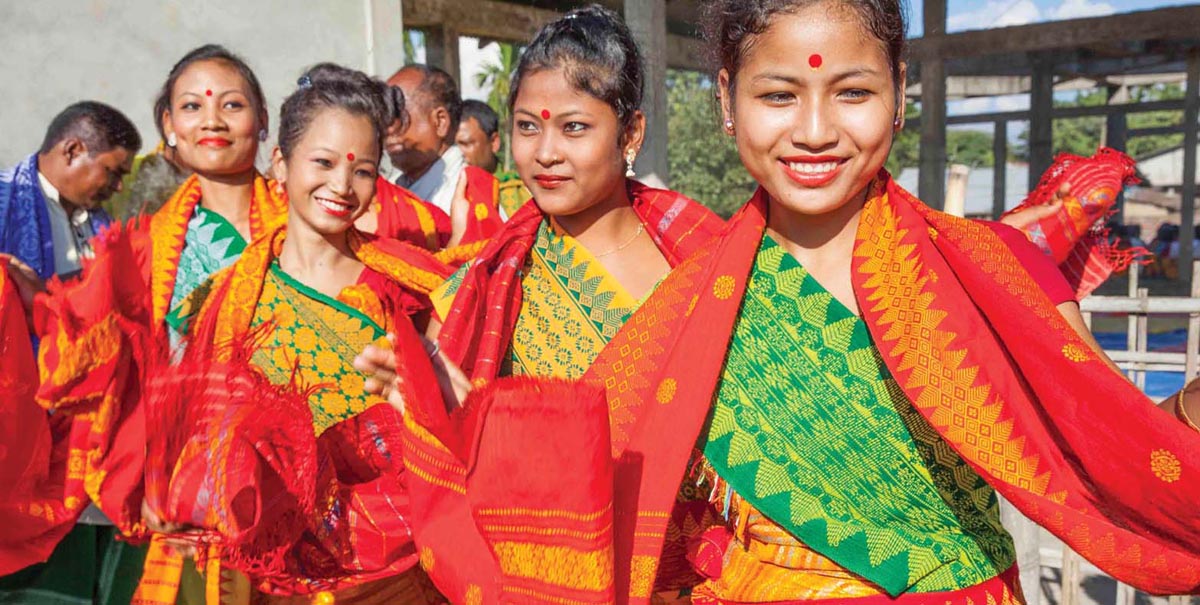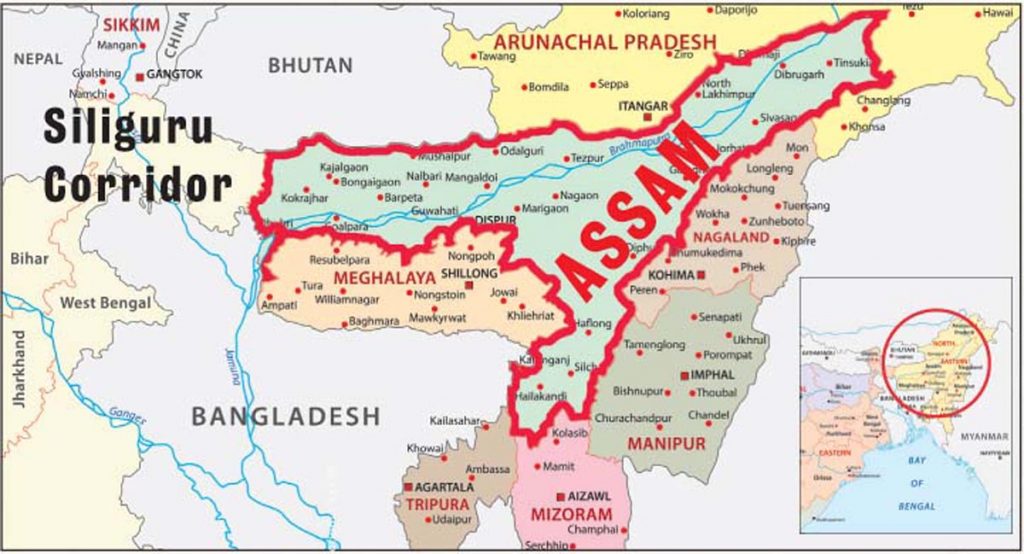prasad1
Active member
 Karbi women in locally woven cotton outfits, including the dokhona dress and jwmgra scarf, dance at the Brahma Dharma Jyoti Mondir in Langhin Manikpur, central Assam. THOMAS KELLY
Karbi women in locally woven cotton outfits, including the dokhona dress and jwmgra scarf, dance at the Brahma Dharma Jyoti Mondir in Langhin Manikpur, central Assam. THOMAS KELLYMeeting the many peoples of Assam
Assam, India’s Northeast state embracing the immense Brahmaputra River valley, is a land of remarkable variety—of people, traditions, religious practice, flora, fauna and natural resources. Join us as we visit the major temples and religious institutions of this place of ancient and modern migrants from both inside and outside modern India.By Rajiv Malik, New Delhi
Assam, one of the “seven sisters” states of northeastern India, is famous for its Vaishnava satras (religious centers) and majestic ancient temples, including Kamakhya for the Goddess Shakti and Sivasagar, built by the Ahom dynasty in the 18th century. The name Assam is possibly based on Ahom, though others ascribe it to a-cham (“undefeated”) from the Tai language, ha-sam (“land of the Bodo people”) or asama (“peerless”) from Sanskrit. In ancient times the area was known as Kamarupa. The Pandava brothers of the Mahabharata lived and married here while in exile.

Map of Assam, central state of India’s “Seven Sisters” of the Northeast which are connected to the rest of India by the 27-km wide Siliguru Corridor
Assam is 61% Hindu, 34% Muslim, 3.7% Christian plus a small number of Buddhists, Jains and Sikhs. It is home to all the three main streams of Hinduism: Vaishnavism, Shaktism and Saivism—this among a population of 31 million people comprising hundreds of tribal, ethnic, linguistic and religious communities speaking 45 languages. Of the 20 largest tribes, the most prominent are the Bodos and Misings of Tibeto-Burmese origin. There are also millions of Bangladeshi illegal migrants, both Hindu and Muslim. Assam is blessed with an abundance of natural resources, including tea, silk, oil and the mighty Brahmaputra River.

Assam: Land of Devotion - Part 1 - Hinduism Today
Meeting the many peoples of Assam Assam, India’s Northeast state embracing the immense Brahmaputra River valley, is a land of remarkable variety—of
 www.hinduismtoday.com
www.hinduismtoday.com

